Greetings from rainy Barranquilla!
On Monday afternoon we flew to Barranquilla, a port city in the north of Colombia that sits on the Magdalena River and empties into the Caribbean. If you were to draw a straight line on a map heading west you’d hit the northern tip of Costa Rica and if you did the same to the north you’d touch the western limit of Haiti. Here on the lip of South America everything feels impossibly far away and surprisingly close at the same time.
Shakira is from Barranquilla and our taxi driver informed us that she was here three days ago to visit her father, who is apparently ill. Barranquilla and Shakira go together like Indianapolis and Kurt Vonnegut. That’s maybe not the greatest analogy (minor city that is home to a major artist), but I’ve had Vonnegut on my mind lately. On Monday Colombia defeated Paraguay in the Copa América and now sits in first place in Group D. Colombia will face off against Costa Rica on Friday and there are a lot of people in Barranquilla running around in yellow jerseys.
As I mentioned last week, prior to our visit here we spent a week in Medellin, one of the most unusual cities I’ve ever visited. The geography is like something out of a dream. Slender high-rises and tower blocks rise out of the canyons that encircle the city, which in turn are surrounded by steep walls of green mountains. Clouds slip over these walls and drift into the City of Eternal Spring, nosing around the skyscrapers like errant ghosts.
Because it is the rainy season it is always raining or just about to. The streets are narrow, the cars are like toys and can be damaged just by slamming the door too hard. It is a city made for motorbikes that zip around the streets like golondrinas, darting in every direction. The roads don’t just go left and right but swoop up and down. The bikers are encumbered by delivery bags or other passengers who sometimes scroll through their phones while all around them anarchy reigns.
We spent two nights at a friend’s boyfriend’s apartment in El Poblado and then a hotel in Laureles, which is near the university and close to several night clubs. This made the ear plugs, that I never travel without a necessity. I handed them out to Nuvia and her colleagues like candy.
When I’m in a new city I rarely jump on the metro or in a taxi and go see the thing everyone says I have to see. I like to explore the neighborhood where I’m staying and then travel a little farther each day until I have a sense of the place and what it’s like. Most of the time I’d rather go back to a cool coffee shop or bookstore than visit a tourist attraction. One afternoon, after spending an hour in a fabulous bookstore called Anti-Materia, a thunderstorm erupted and I was stuck drinking coffee, reading Josê Donosa, writing in my journal, and listening to the rain for most of the afternoon. When all is said and done, this may be memory I cherish most about this entire trip.
I did do a few touristy things. I went to Parque Explorer and visited the aquarium and the interactive science exhibits, which were great. I went to the MAMM, the museum of modern art, and even when the art didn’t move me the curation did. Most of the Americas do a much better job of displaying art than we do in the United States. We went to a finca on the outskirts of the city in a village called El Peńol where I ate a large bowl of beans for lunch and stretched out in a hammock for a siesta, surrounded by orchids while clouds like battleships surfed the sky.
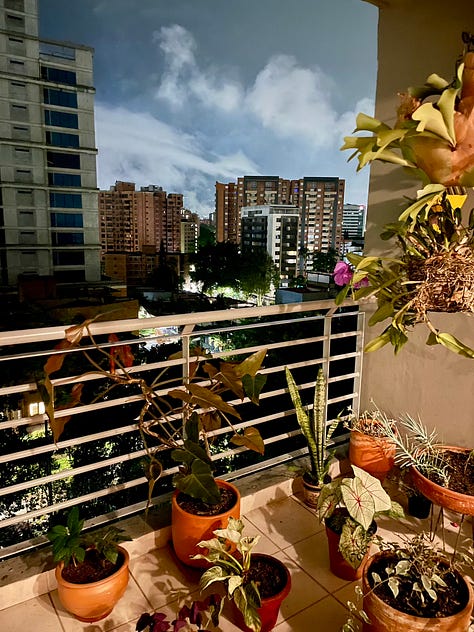

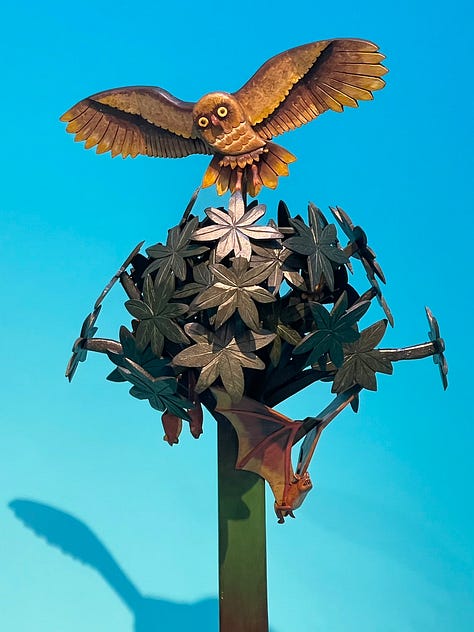
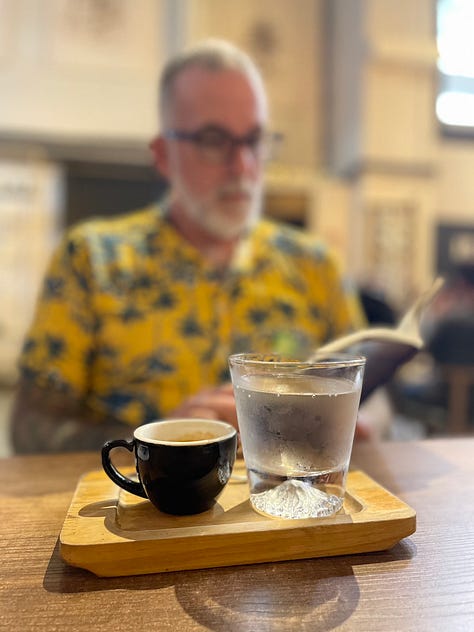
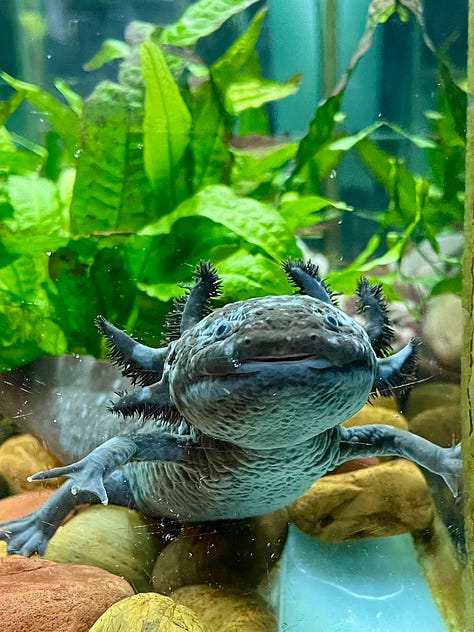
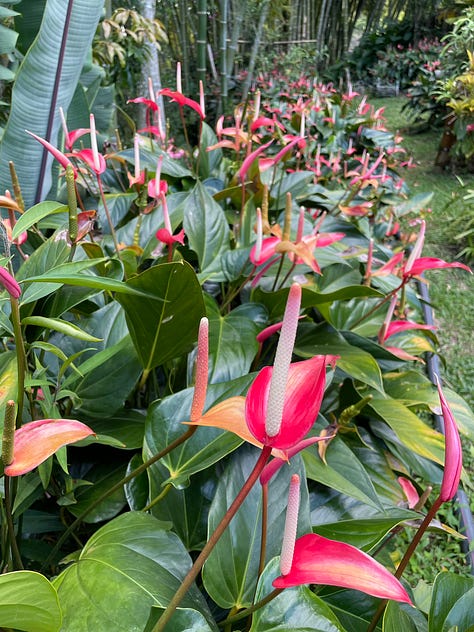
José Donoso’s The Obscene Bird of Night
Yesterday I finished José Donoso’s The Obscene Bird of Night (translated by Megan McDowell), one of the masterpieces of the Latin American Boom, alongside Gabriel Garcia Marquez’s One Hundred Years of Solitude and Julio Cortazar’s Hopscotch, but Donoso’s book is the darkest.
In her translator’s note, McDowell writes: “They say that the only thing one can say for certain after finishing The Obscene Bird of Night is that one has read it.” This rings true for me in that while the story isn’t difficult to grasp, it’s extremely elusive.
It’s a shape-shifter of a novel. Voices inhabit empty shells, people take on different personas, identities are fluid—an old woman becomes a baby, a promiscuous orphan is transformed into a saintly mother. Even the setting is in flux with the Casa de Ejercicios Espirituales de la Encarnación expanding into an endless warren of courts, chapels, cloisters and compartments filled with all manner of junk, from broken statuary, to pieces of relics, to old coats whose pockets are stuffed with forgotten jewelry.
In his introduction, Alejandro Zambra confessed to making a study of the novel when he was young, and abandoning the project after 100 pages because it is not a book that lends itself to scrutiny because it’s always changing, dreamlike and disturbing. Its density is overwhelming but the novel’s language is swift and surefooted, like a current running through a swamp.
I’m not going to attempt to describe the plot, which is pretty far down the list of reasons why you’d want to read The Obscene Bird of Night or what you’d take away from the experience. (When I was an undergraduate, a literature professor encouraged me to read it, but I didn’t make it past the first chapter.) Make no mistake, this book is besotted with the monstrous, a book that would have gotten you burned at the stake a few centuries ago.
“…it was said, it was said that it was said or that someone had heard it said, no one knew just where, that on moonlit nights a horrible head would fly through the air, trailing a long mane of wheat-colored hair, and it’s face was the lovely face of the landowner’s daughter.”
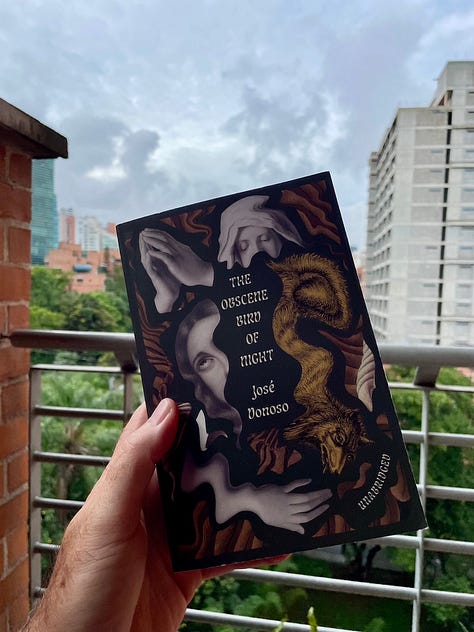

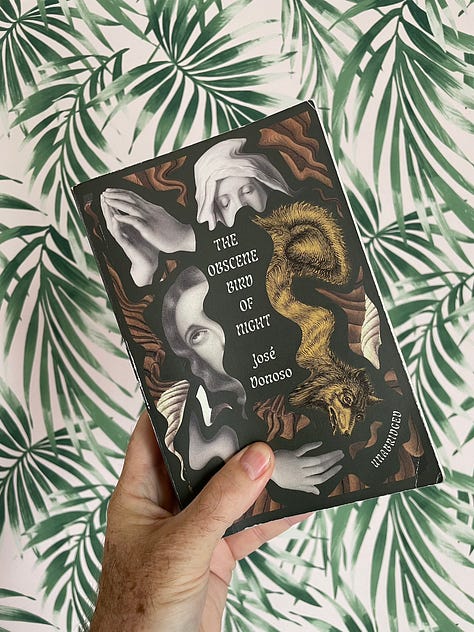
This is the obscene bird of night, the least terrifying of all the monsters, which includes witches, imbunches, and a secret society of people defined by their deformities. The novel begins and ends at the Casa, a home for elderly nuns that has also taken in a number of pious widows and hapless orphans who have nowhere else to go. The novel opens with the death of one of the Casa’s inhabitants and after a while we are introduced to Humberto Peñaloza, the novel’s scheming narrator, though he has many voices and goes by numerous guises, and the guiding force behind many of the novel’s changes and transformations.
Some books take you on a journey, some help you pass the time, but reading this novel was an altogether different experience for me. Like another sprawling novel full of dark secrets, Mariana Enriquez’s Our Share of Night, at times I felt like I was inside of the book, and at times I felt like the book was inside of me. Despite how deeply weird this book is, how much it tormented its author and dogged him for years until he completed it, a spirit of pitiless humor animates the language and propels it forward.
Reading Donoso’s masterpiece was a much-needed reminder that great literature is impossible without that animating spirit, that malevolent spark on the page that stands in for the author. When it’s there, the reader will follow you anywhere.
NOTE: If this piques your curiosity, I spoke to Megan McDowell for this week’s LA Times Book Club newsletter. I’ll link to it next week but look for it on Saturday.
John Albert’s Running with the Devil
Another piece I’m working on for the LA Times concerns a book release party for the late John Albert.
After John’s sudden passing last year, Joe Donnelly and Iris Berry assembled Running with the Devil, a book of his collected essays, which I’ll have plenty to say about in the piece.
The event is Sunday, June 30 from 3pm to 7pm at Wacko Soap Plant in LA and features a star-studded assembly of readers and storytellers, including Keith Morris, Brett Gurewitz, Jennifer Finch, and Jerry Stahl.
You know who else is coming to LA? Creepy Nuts.
Thanks for reading. I hope the rest of your week is full of great works of literature and music that doesn’t make you feel like you’ve gone insane.
If you’re new-ish here and you liked this newsletter you might also like my latest novel Make It Stop, or the paperback edition of Corporate Rock Sucks: The Rise & Fall of SST Records, or my book with Bad Religion, or my book with Keith Morris. I have more books and zines for sale here. Message from the Underworld comes out every Wednesday and is always available for free, but paid subscribers also get Orca Alert! on most Sundays. It’s a weekly round-up of links about art, culture, crime, and killer whales.

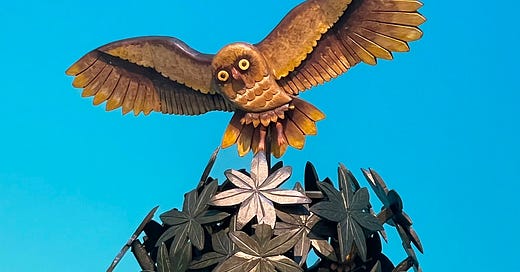

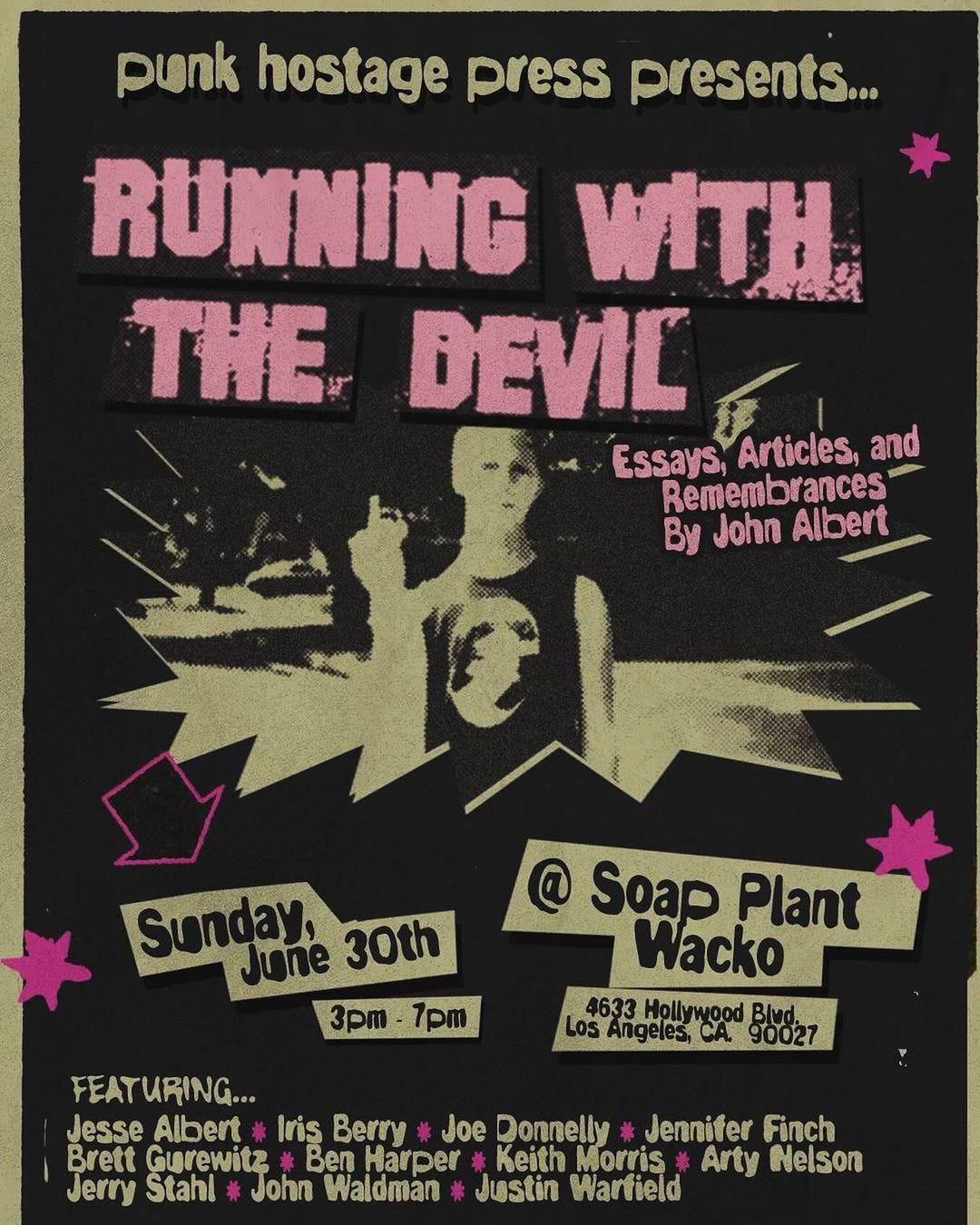
I knew John Albert through his wife Dee Dee .... didn't realize he was such a big part of the LA music world. RIP.
Safe travels. And thanks for sharing some of your journeys with your humble readers.